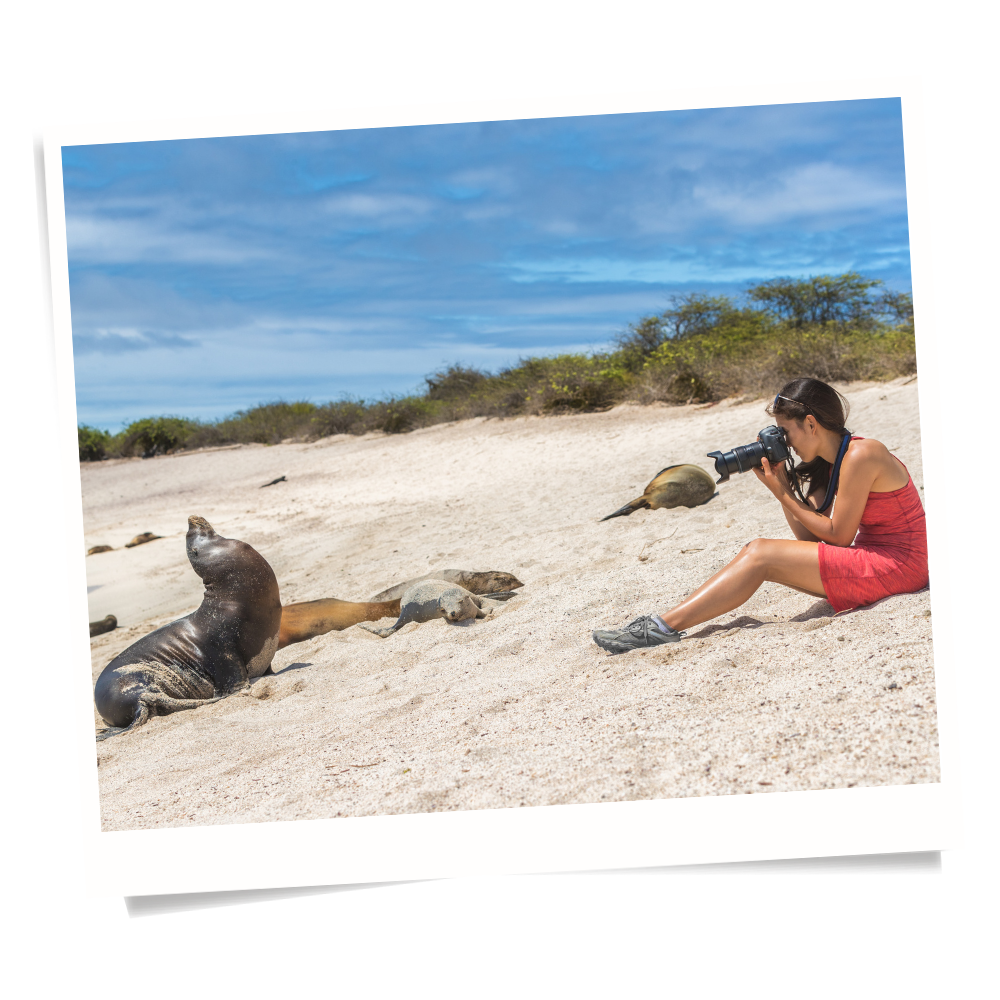Destination
Islas Galapagos
The Galapagos Islands in Ecuador are so important and visited because of their extraordinary biodiversity and large number of endemic species found nowhere else in the world. It was on these islands that Charles Darwin developed his theory of evolution by natural selection, which has made them an invaluable natural laboratory for scientific research.
In addition, the Galapagos Islands are a UNESCO World Heritage Site and are part of the largest marine reserve in the world, reflecting their importance in terms of conservation and biodiversity protection. This has led to the implementation of strict regulations to ensure the preservation of the islands’ unique ecosystem.
On the other hand, the Galapagos Islands are a paradise for nature lovers and ecotourism, as they offer the opportunity to closely observe a great variety of species, such as giant tortoises, marine iguanas, sea lions, and penguins, among others. It is also a popular destination for activities such as diving, snorkeling, kayaking, and hiking.
The history of tourism in the Galapagos Islands dates back to the mid-20th century when the first tourist expeditions to the islands began to open.
However, it was in the 1970s when tourism really took off, attracting travelers from all over the world interested in exploring the islands’ natural beauty and unique wildlife.
The importance of tourism in the Galapagos Islands lies in its contribution to the conservation of the region’s flora and fauna. The Ecuadorian government has implemented measures to limit the environmental impact of tourism on the islands, such as visitor restrictions, wildlife regulations, and environmental awareness campaigns. Through fundraising through entrance fees and conservation programs, tourism in the islands has helped to protect and preserve the unique Galapagos ecosystem. In addition, tourism has generated employment and economic opportunities for the local population, improving their quality of life.
Tourism in the Galapagos Islands has been fundamental to the conservation of this unique ecosystem while generating economic benefits for the local population. It is important to continue promoting responsible and sustainable tourism in the region to ensure the long-term protection of the Galapagos Islands.


Ocean Galapagos Travel
Embark on an unforgettable adventure with our exclusive travel package to the Galapagos Islands. Delve into a meticulously tailored itinerary that features captivating wildlife sightings, unspoiled beaches, and remarkable volcanic scenery.
Whether you’re snorkeling alongside magnificent sea turtles or trekking to the summits of volcanic craters, this package promises a harmonious mix of relaxation and discovery.
Santa Cruz Island
Santa Cruz Island is the second largest island of the Galapagos Islands archipelago in Ecuador. It was discovered in the 16th century by Spanish navigators and has been an important point of reference for explorers, scientists and tourists throughout history.


San Cristobal Island
San Cristóbal is the fifth largest island of the Galapagos Islands in Ecuador, known for its rich biodiversity and its important role in the history of evolution. The island has been inhabited for centuries by fishermen and farmers, and was the first island to be visited by Charles Darwin during his famous voyage on the HMS Beagle.
San Cristobal is a popular tourist destination in the Galapagos, attracting travelers from all over the world who come to admire the island’s unique wildlife and natural beauty.
Isabela Island
Isabela Island is the largest island in the Galapagos, with an area of approximately 4,640 km², located at the western end of the archipelago. It stands out for its impressive volcanic landscape and its numerous volcanoes, some of which are still active


Wildlife
The importance of the fauna and flora of Ecuador’s Galapagos Islands lies in their exceptional biodiversity and their relevance to science and species conservation. These islands are considered one of the most important wildlife viewing destinations in the world due to their geographic isolation and unique ecosystems.
Some curious facts about the fauna of Ecuador’s Galapagos Islands include that it is home to endemic species such as giant tortoises, Galapagos penguins, marine iguanas and flightless cormorants.

